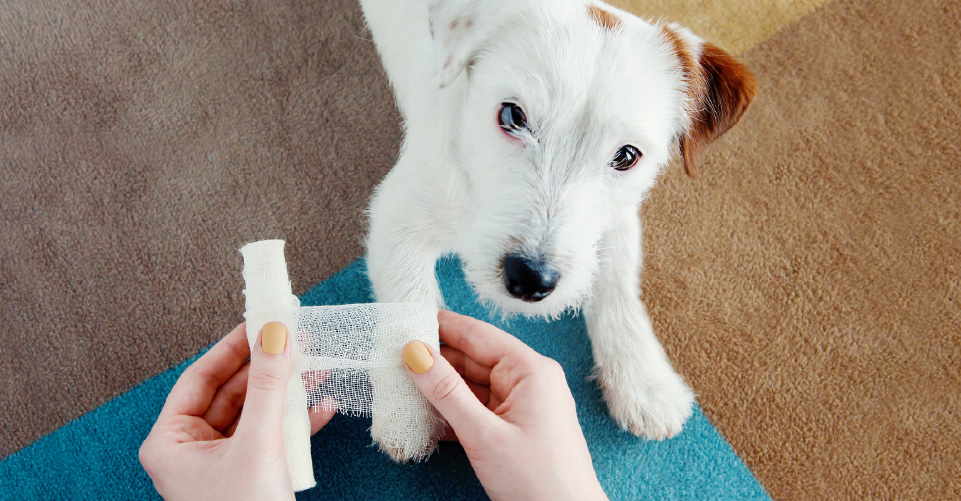5 tips and 5 items you should have in your pet’s first aid kit.
It’s pet first aid awareness month, and providing a healthy lifestyle to your pretty pooch or fluffy feline is essential to be a pawfect parent!
Always remember that first aid is not a substitute for veterinary care, but is aimed at saving your pet's life until they can receive the proper veterinary treatment.
There are a few emergency situations that could arise, and we have some tips on how to approach them.
Bleeding:
- Use a clean towel, gauze swab, or bandage to apply pressure to the wound.
- If blood soaks through, add more layers, and keep applying pressure.
- Keep your pet calm and as still as possible and then call the vet.
Choking:
- If you can see an object stuck in their throat, try to remove it with pliers or tweezers (but be careful not to push it further down).
- If you can’t remove the object, try to dislodge the object by forcing air out of the pet’s lungs by firmly applying quick pressure 3-4 times to both sides of the rib cage.
- Or you can perform the Heimlich manoeuvre. Put your pet on its back, place your hands over the abdomen near the bottom of the rib cage, and gently but firmly thrust towards the spine.
Poisoning:
- Some foods and common household products are toxic to dogs or cats. These include: raisins and grapes, chocolate (darker = more toxic), lily flowers, garlic, onion, paracetamol, ibuprofen, snail or rat bait, anti-freeze, mouldy food and xylitol sweetener.
- If the substance had come into contact with the eyes or skin of the pet, rinse the area thoroughly with water.
- If you suspect your pet has eaten something toxic, write down the time it happened, and how much was ingested.
- Do not try to induce vomiting or give any medication, unless your vet tells you to do so.
- Activated charcoal is administered to absorb certain toxins, but if it is given incorrectly, the pet may breathe the charcoal into their lungs, which can be fatal.
- Liquids such as milk may aid the rapid spread of the poison through the body.
Seizures:
- If your pet is paddling their paws, salivating, and doesn’t respond when you call them, it may be having a seizure.
- Clear the area of any objects that may cause injuries, but do not try to hold the animal still or open their mouth.
- It’s very distressing to see your pet experience a seizure, but take a video of the episode and note how long it lasts. This will be very useful information for the vet.
- Once the seizure has stopped, the pet will be disorientated, so keep them contained in a safe area until you can take them to the vet.
- If the seizure lasts for longer than 2 minutes, take them to the vet immediately.
Snake Bites:
- Try to identify the snake if possible. This will help the vet to decide on the best treatment for the pet.
- Keep the pet as calm and as still as possible.
- Do not manipulate the area around the bite wound. Don’t cut over the fang marks and don’t put an ice pack or tourniquet on the area. Seek immediate assistance from a vet.
Accidents can happen at any time, and it's important to be prepared. Here are some of the essential items that need to be in your pet’s first aid kit:
- A digital thermometer: The normal temperature for dogs and cats is between 37,5°C and 39°C.
- A bandaging set: A gauze roll, cotton wool, adhesive tape, and scissors.
- A syringe without a needle, to flush wounds or give oral treatment.
- Saline solution to cleanse wounds.
- Tweezers for removing stings, thorns, or swallowed objects.
Of course, veterinary emergency and critical care treatments can be very costly, so it’s important to plan ahead. Pet health insurance takes the sting out of those unexpected vet bills. Get peace of mind with dotsure.co.za.



